
A few days ago I had the opportunity to touch the latest addition to the Panasonic family: Lumix s5. This is the mirrorless that was missing in the full-frame range, the one that will bring the general public closer to the Panasonic professional family.
In fact, if the Panasonic S series until now was intended for an expert audience, not to say exclusively pro, thanks to the new Lumix S5 the wind changes a bit. The family expands by continuing to aim very high, but with a model also suitable for those who are not very familiar with cameras of this kind. Lumix S5 is the connecting link that in a small and light body contains many of the professional technologies of the S series.
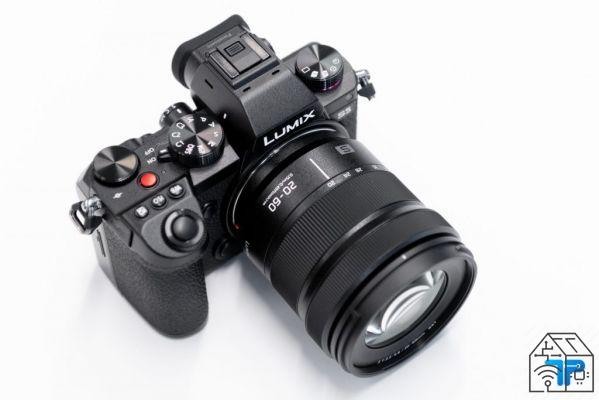
This new Lumix is a camera that has all the credentials to break the hearts of many photographers, both for those who want to make the leap to full format and for those who may already own a Lumix S and want to join him for a second. body. But also for the whole new generation of creators who with a single body could create both video and quality photography.
Lumix S5: technical characteristics
If I had to make a comparison with one of the three sisters, the Lumix S5 is certainly closer to the S1 than the other versions. I remind you that S1R is the purely photographic full-frame, S1H the one dedicated to cinema and S1 is the middle ground for those who take both photos and videos. It is clear that for a model within everyone's reach, one could not help but propose a hybrid camera. Lumix S5 has in fact a 24,2MP sensor (the same as S1) and is able to record in 4K 60p.
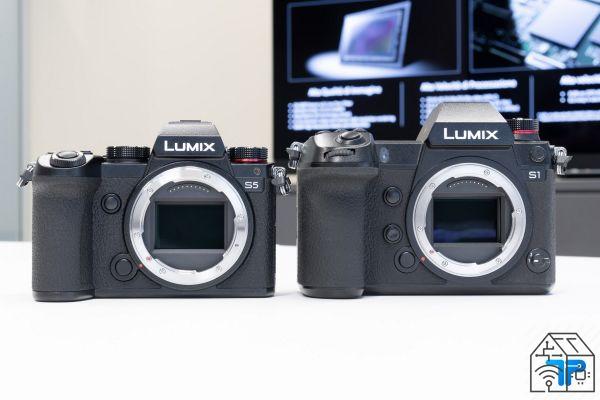
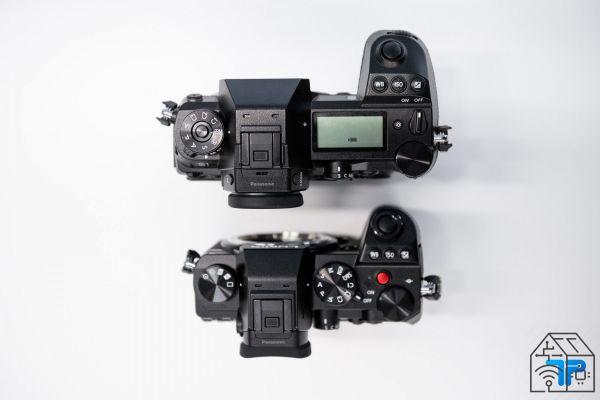
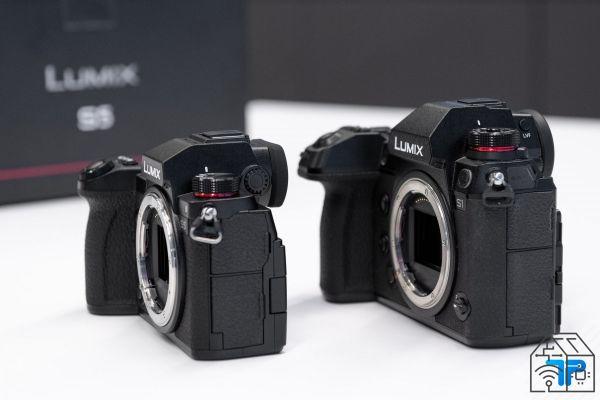
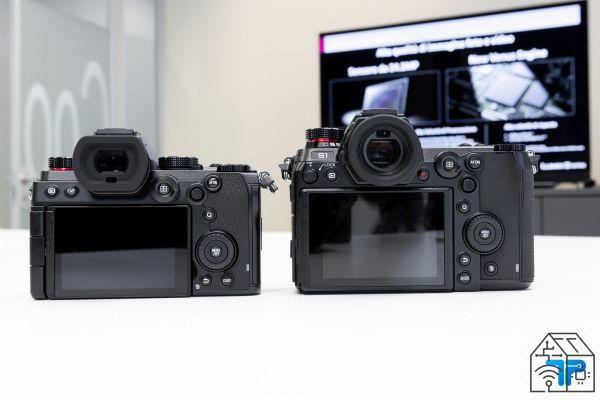
Going into detail, the sensor, without a low-pass filter, is flanked by the most recent image processing processor Venus Engine high speed. The combination of the two allows you to work at an ISO range that goes from 100 to 51.200 (extended from 50 to 204.800 ISO), offers a very wide dynamic range but above all a high data processing speed. On board Lumix S5 also Dual Native ISO technology and 96MP high resolution shooting mode, both in RAW and JPEG format.
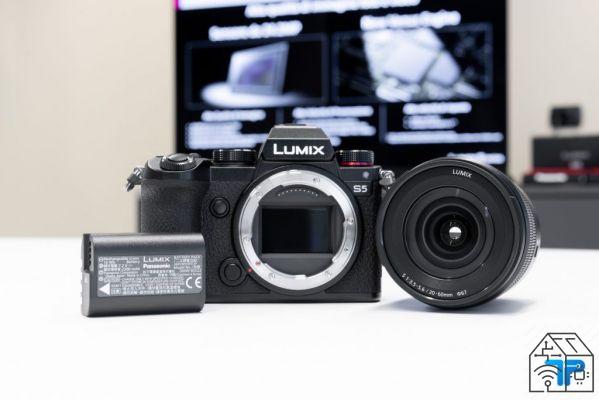
Until now it is in front of characteristics very close to its big sister S1, but going further we discover that the stabilization system is not the same. It is always a Dual I.S. sul sensore, but the compensation offered reaches a maximum of 5 stops compared to the 6 of the S1. With the 2-axis Dual IS 5 mode, which provides for the combination of sensor stabilization with that of the optics, 6,5 stops are reached.
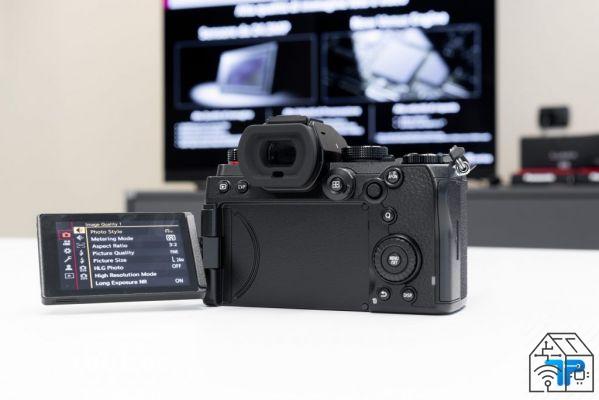
Improved autofocus performance
One of the critical points for Panasonic has always been theautofocus. Or rather, the AF tracking that many have always considered not up to par with the rest of the performances. And precisely on this aspect there has been a development that on paper (I can't wait to test it) would seem to be very important. With Lumix S5 we are always faced with a contrast system combined with DFD (Depht From Defocus) technology, but which, thanks to the processing speed and data transmission between the lens and the sensor, should be much more effective. Panasonic talks about only 0,08 sec to focus, even in critical conditions such as low-contrast or low-light scenes (down to -6EV).
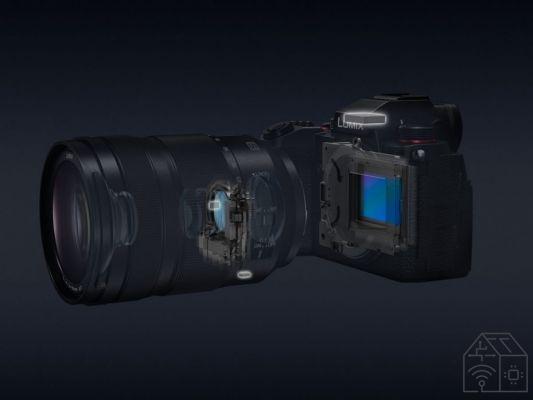
And if so far I can hardly believe it, because the Lumix S1 from this point of view were not attackable, the one on which the greatest efforts have been concentrated is the resistance of the subject. With Lumix S5 also the recognition of the head and body appears in addition to that of the face and eyes. But also that for animals, such as dogs, cats and birds.
Panasonic's new full-frame mirrorless will be able to recognize faces even when the subject is in profile or has their face tilted. But also when the potion occupied in the scene is minimal or when the subject leaves the center of the scene. Lumix S5 will continue to keep the focus even if our subject turns around showing the back of the head and we will have no problems if a second face enters the scene. In short, the best that they can be really interesting for both photographers and videomakers. And, I add, that we all hope to see implemented via firmware also on the S1 series.
Lumix S5: the video sector
The video world is a tradition at Panasonic and even Lumix S5, in fact, has a number of prominent video features on its side. To start with, there is technology Dual ISO for better low light performance. On each pixel of the sensor there are two dedicated circuits, one for low ISO and one for high ISO. Basically with the Dual ISO you can work at high sensitivities, greatly reducing the presence of noise and the management of the two circuits is automatically controlled by the camera. This technology, already known on home cameras, will allow for cleaner results and greater dynamic range.
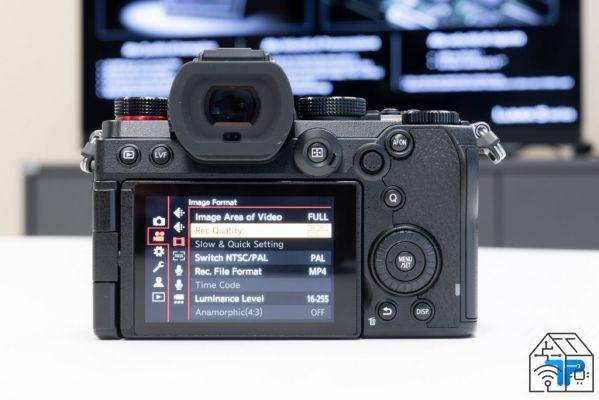
On board Lumix S5 is already pre-installed a 14+ stop V-Log and Cinema VariCam Look compatible V-Gamut. With the first you can make the most of the wide dynamic range, being able to preview the effects of the application live from the display (V-Log View Assist). While, thanks to V-Gamut, the shot can be post-produced for each color space. These are therefore camera features and that make Lumix S5 a perfect ally for those who already own a S1H or a Panasonic professional video camera. In fact, it will also be possible to insert this mirrorless in the workflow, obtaining results in line with the other camera bodies. Among other things, 35 LUT profiles are already available to download for free and use with S5.
With this new full-frame mirrorless we can clearly record up to 4K 60p and directly in the camera with 4: 2: 0 10-bit sampling. With the help of an external recorder it is also possible to work in 4: 2: 2 at 10 bit. We can record in HDR with HLG View Assist, to record images with extended dynamic range and preview a simulation of what the shooting will be on the monitor.
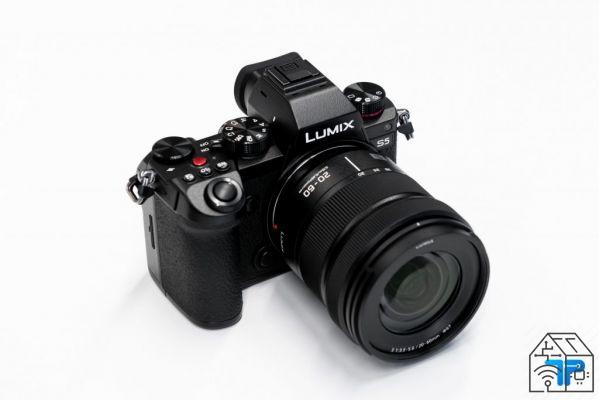
The many functions available also include the ability to switch from recording in NTSC to PAL format, to view the shooting frame, select two different ranges for the Zebra pattern and even record vertical video for social networks.
High resolution photo
If the video aspect is very important today for a mirrorless, this does not mean that the photographic aspect is less so. Lumix S5, as I have already said, is a hybrid camera, with which to deal with both moving and still shooting. From a photographic point of view the news are not very many, but still interesting. We find the 96MP high resolution shooting mode, which with this camera can also save the file in JPG format. But not only that, in fact, the possibility of shooting with times up to 8 seconds has also been implemented.

And if other manufacturers create cameras specifically for astrophotography, with the S5 we will be able to exploit some features for this purpose. It will not be the same but it is certainly a good one. On Lumix S5 we can for example activate the night vision mode or take advantage of the new function of Live View Composite. Thanks to this mode, when we take a shot and compose it with the previous one, Lumix S5 will show us the evolution of the image in real time, which was not possible with the previous models.
Performance in terms of speed is also good. With Lumix S5 we can shoot at full resolution with AFS and manual focus with a cadence of 7 fps. In AFC the speed drops to 5 fps but practically without duration limits. On board the new Panasonic mirrorless, however, there are also 6K Photo and 4K Photo modes, which create videos from which to extrapolate photos from 18MP and 8MP respectively.
Lumix S5: design and other features
It seems to me that I have already clarified that the body of Lumix S5 is smaller than that of the S1 older sisters. This does not mean, however, that it is not structured in such a way as to offer a comfortable and above all solid grip. The handle, despite as you can see from the comparison images with S1, is small, but I can assure you that in the hand Lumix S5 is very comfortable. The structure is made of magnesium alloy and resistant to dust and splashes to work without fear even outdoors. The design is also designed to offer the best possible heat dissipation to avoid overheating during long shooting sessions.
The electronic viewfinder also changes, which although of good quality is not up to that of the S1 range. It is a 2,360k-dot OLED Live View Finder. Staying on the subject of display, on the back we find a Free-angle screen from 1,840k points with 3 inches diagonal, equipped with very reactive tactile functions. Lumix S5 born as a hybrid camera also has several connection interfaces, such as HDMI (micro for space reasons), USB 3.1 TypeC, hot shoe and the sockets for microphone and headphones with 3,5mm jack.
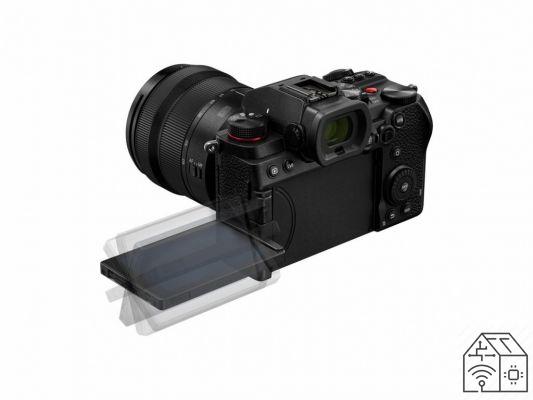
Despite the size, however, Panasonic does not give up the double memory card slot, both for SD. Therefore, different recording modes are also available, both for photos and videos. The same battery as the sisters would not have entered the Lumix S5: DMW-BLK22 is the abbreviation of the new battery which according to what has been declared will guarantee up to 500 shots. However, by activating the energy saving mode you can go up to 1500. However, through the USB-C socket you can power the camera with a power bank and continue to work. But of course also simply recharging the battery.
There is no shortage of wireless Bluetooth and WiFi connectivity and the ability to work remotely through the Lumix Sync App. Furthermore, thanks to the new Lumix Tether software you can shoot via computer and with Lumix Tether Streaming also use S5 as a webcam.
Lumix S5: accessories, availability and price
As with the entire Lumix S range, many accessories are also available for the S5, such as the external flash, the Battery Grip and the DMW-XLR1 microphone adapter. Among others also the small Tripod Grip SHGR1 that we had seen with Lumix G100.
The new Lumix S5 will be available from the end of September in two versions, one body only at the suggested retail price of € 1999 and one in kit with the standard 20-60mm f / 3,5-5,6 lens for € 2299.
Bestseller no. 1 Panasonic DC-FZ82 4K Camera, 18.1 Megapixel, Lens ...
Panasonic DC-FZ82 4K Camera, 18.1 Megapixel, Lens ...
- 18.1 Megapixel high sensitivity MOS sensor
- Dynamic ultra wide angle zoom 20-1200 mm
- 4K Photo and 4K Video features
 Panasonic Lumix DC-G9 Fotocamera EVIL da 20,3 MP (20 fps AFC...
Panasonic Lumix DC-G9 Fotocamera EVIL da 20,3 MP (20 fps AFC...
- It has a 20,3 megapixel Live MOS digital sensor without low pass filter that allows you to give free rein ...
- Advanced tracking performance with 20fps in continuous AFC mode will lock focus in just 0,04 ...
- The 6K photography function allows you to capture the unexpected, because it shoots a sequence of 30 frames per ...


























